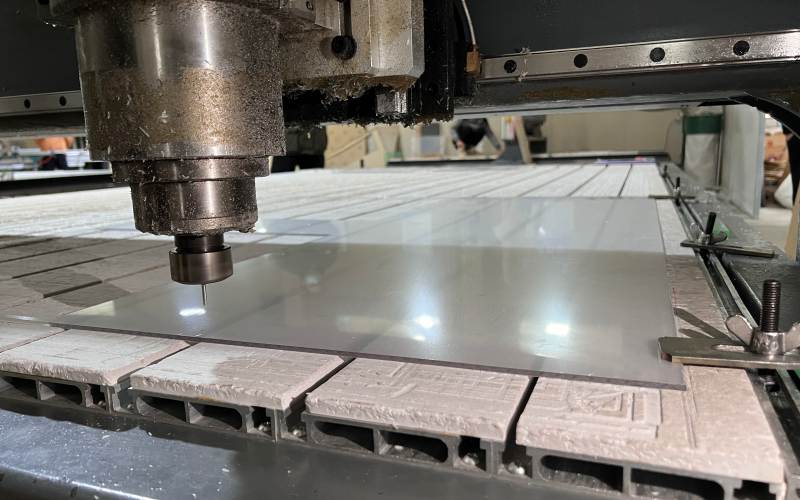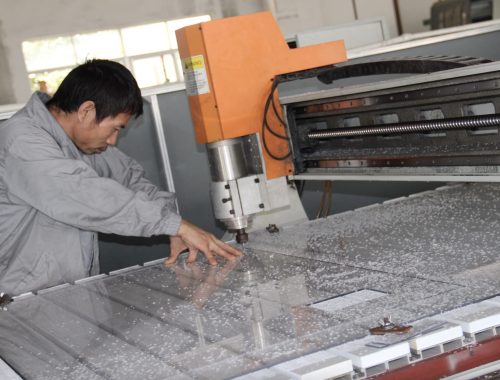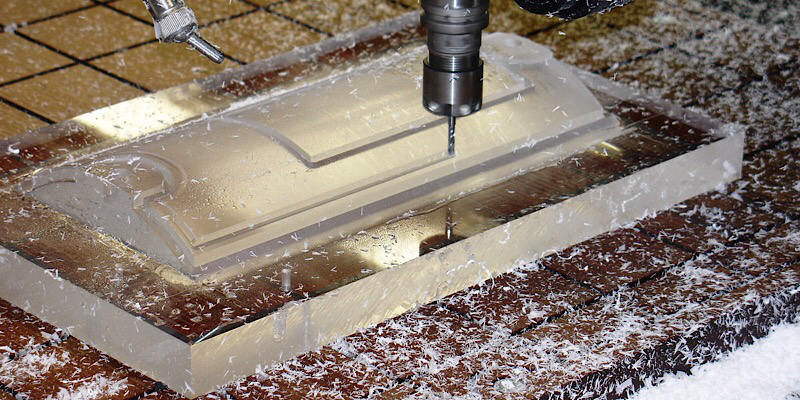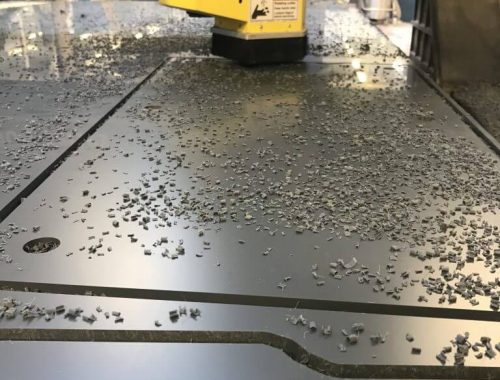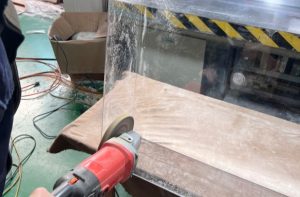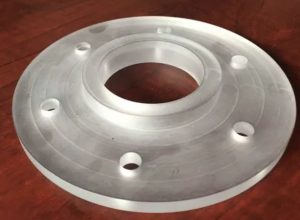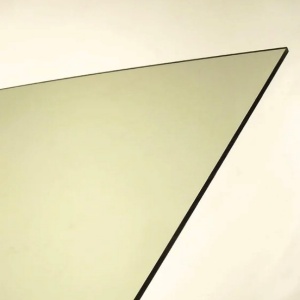Here’s a detailed guide on how to machining polycarbonate accurately and efficiently on CNC Machines.
Step 1. Preparing CAD Drawing first
Getting the digital model that includes all necessary dimensions, features, and specifications from your customers or engineers.
Step 2. CAM Programming
Import the CAD model into CAM software to generate toolpaths of cutting operations. Setting cutting tools, cutting speeds, feeds, and depths for each operation.
Step 3. Material Setup
Fix the polycarbonate sheet well on the machine’s worktable by using clamps, vacuum hold-downs, or other fixtures.
Step 4. Tool Selection and Setup
Choose appropriate cutting tools. You need to know well about the CAM program and the properties of polycarbonate material. The end mills, drills, and routers are common tools for polycarbonate machining.
Step 5. Machine Setup
You need to set up the CNC machine according to the requirements of the CAM program. For example, loading the CNC program into the machine’s control unit, setting the workpiece origin (zero point), and configuring cutting parameters such as spindle speed, feed rate, and tool offsets.
Step 6. Cutting Operations
Execute the CNC program, to start the machining operations defined in the CAM software.
Step 7. Coolant and Chip Management
To prevent overheating of the cutting tools and workpiece by using coolant or lubricant.
Step.9. Finishing Operations
After machining,some finishing operations are needed including deburring, sanding, polishing, or coating the machined surfaces as required.
Step.10. Final Inspection and Testing
To do some tests or quality checks as necessary to verify the functionality and performance of the machined polycarbonate components.
By following above steps systematically and accurately, you can machine polycarbonate material to create precise, high-quality parts and components for various applications. Of course, you need qualified with professional knowledges about polycarbonate material and special skills about the operation of CNC machines. EXCELITE with professional R&D and engineers team who are more than 10 years experience in CNC machining, just contact us, we will provide you one-stop service from design to choosing the right polycarbonate material to setting up correct cnc machining process to ideal reality products.



